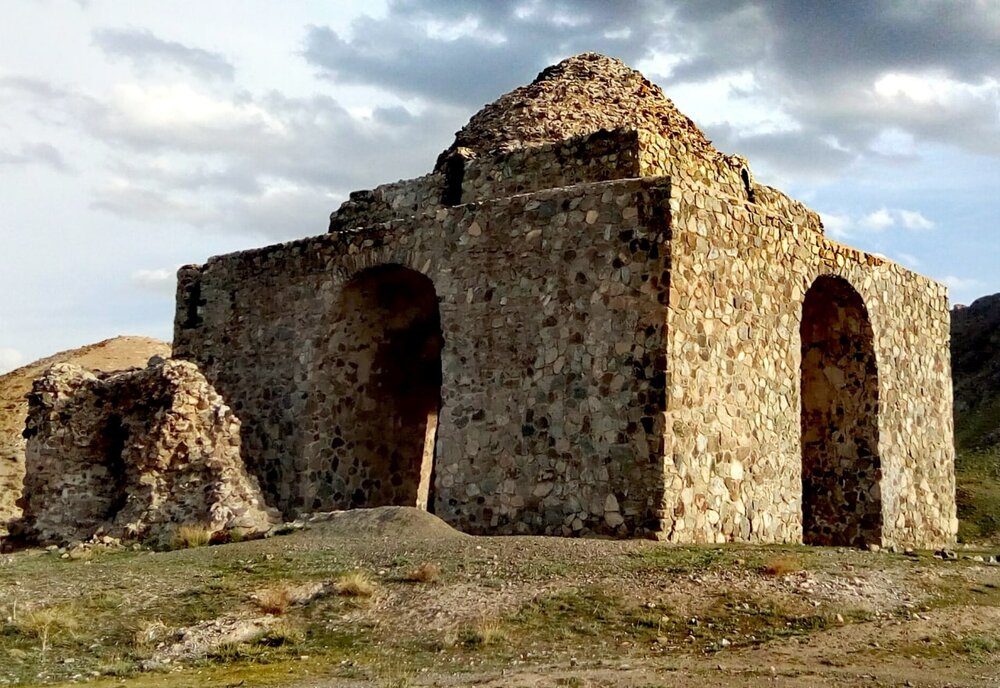Bazeh Hur: reminiscent of Sassanid architecture in northeast Iran

TEHRAN–A destination for cultural travelers and researchers, Bazeh Hur is reminiscent of pure Sassanid architecture in northeast Iran.
The monument is in the form of Chahar-Taq, which is an ancient square-shaped brick room surmounted by a domed roof.
Many experts believe it is an exemplar of fine architecture in the time of Sassanids. “Chahar-Taq (Chahartaq) is a clear example of architectural knowledge and construction technology in the Sassanid period, tourism official Ahmad Danaeinia said earlier this month.
Located 60 km from Mashhad, Khorasan Razavi province, Bazeh Hur resembles a typical Sassanid fire temple, but there has been no trace of a fire altar or fire pedestal in the building.
According to sources, Bazeh Hur had been studied by architect/archaeologist Ernst Hertzfeld (1879–1948) and art historian/archaeologist Andre Godard (1881–1965) who wrote articles about the monument.
As mentioned by experts, the building of Bazeh Hur has maintained its consistency due to a robust foundation. In olden times, caravans from south Khorasan, Sistan-and-Baluchestan, and Kerman passed by this building before they reached Mashhad.
In fact, this architectural arrangement turned into the most typical form of Sassanid religious architecture, relating closely to the expansion and stabilization of Zoroastrianism under the Sassanid reign and continuing during the Islamic era thanks to its usage in religious and holy buildings such as mosques and tombs.
The Sassanid era (224 CE–651) is of very high importance in the history of Iran. Under Sassanids, Persian art and architecture experienced a general renaissance. Architecture often took grandiose proportions, such as palaces at Ctesiphon, Firuzabad, and Sarvestan, which are amongst the highlights of the ensemble.
Crafts such as metalwork and gem-engraving grew highly sophisticated, yet scholarship was encouraged by the state. In those years, works from both the East and West were translated into Pahlavi, the language of the Sassanians.
The Sassanid archaeological landscape also represents a highly efficient system of land use and strategic utilization of natural topography in the creation of the earliest cultural centers of the Sassanid civilization.
In 2018, UNESCO added an ensemble of Sassanian historical cities in southern Iran — titled “Sassanid Archaeological Landscape of Fars Region”-- to its World Heritage list. The ensemble comprises eight archaeological sites situated in three geographical parts of Firuzabad, Bishapur, and Sarvestan. It reflects the optimized utilization of natural topography and bears witness to the influence of Achaemenid and Parthian cultural traditions and of Roman art that later made a significant impact on the architecture and artistic styles of the Islamic era.
AM
Leave a Comment